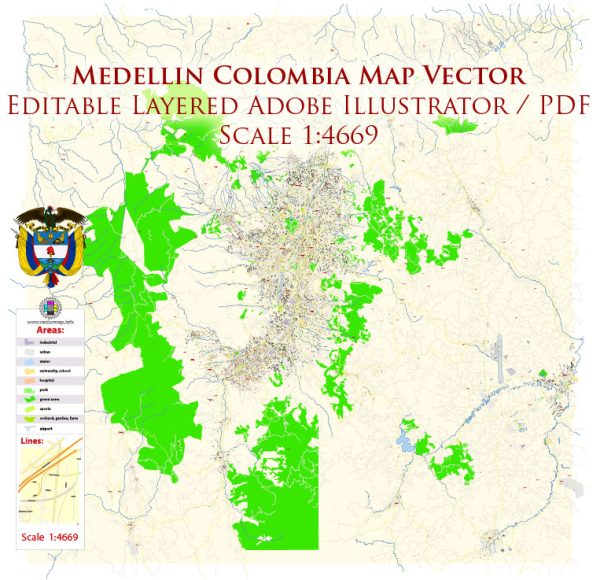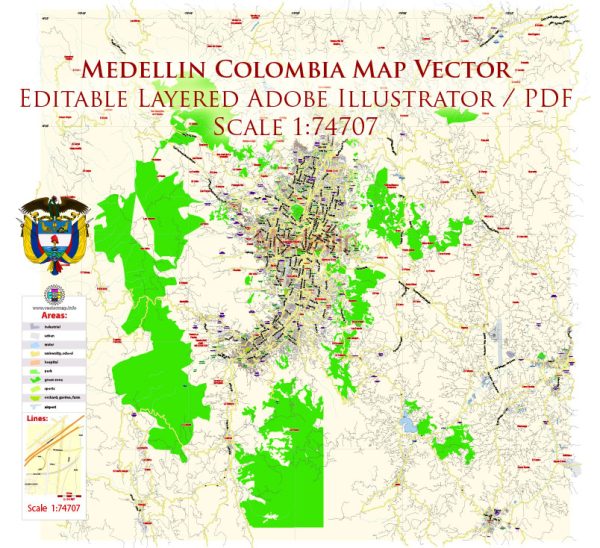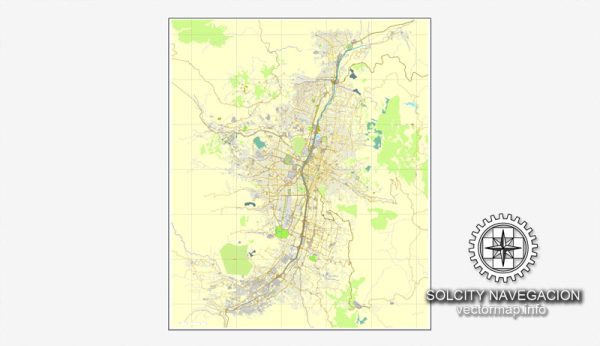Medellín, the second-largest city in Colombia, has a rich history of urban development that reflects the country’s broader socio-political changes over the years. Here is an overview of the history of urban development in Medellín:
- Early Years and Foundation (1616):
- Medellín was founded in 1616 by Francisco Herrera Campuzano. Initially, it was a small town in the Aburrá Valley, surrounded by mountains and endowed with a favorable climate and fertile soil.
- Agricultural Economy (17th to 19th Century):
- For several centuries, Medellín’s economy was primarily agrarian, relying on the cultivation of coffee and other crops. The city’s growth was slow but steady during this period.
- Railway Development (late 19th Century):
- The late 19th century saw significant changes with the introduction of the railway system. This facilitated the transportation of goods, linking Medellín with the Caribbean coast and boosting trade and economic development.
- Industrialization (20th Century):
- The early 20th century marked a shift towards industrialization, with the development of textile and manufacturing industries. This period saw increased urbanization as people from rural areas migrated to the city in search of employment opportunities.
- 1950s-1980s: The “Medellín Miracle” and Urban Expansion:
- Medellín experienced rapid urbanization and economic growth during the mid-20th century, earning it the nickname “The Medellín Miracle.” The city expanded geographically, and new neighborhoods and suburbs emerged.
- Violence and Drug Trade (1980s-1990s):
- The 1980s and 1990s were marked by a dark period in Medellín’s history, characterized by violence associated with drug cartels, particularly the infamous Medellín Cartel led by Pablo Escobar. The city became known for high crime rates and social instability.
- Renewal and Transformation (2000s-Present):
- In the 2000s, Medellín began a process of urban renewal and transformation, aiming to overcome its troubled past. The city invested in infrastructure, public spaces, and social programs to improve the quality of life for its residents.
- Innovative Urban Projects:
- The implementation of innovative urban projects, such as the Metrocable (a cable car system linking hillside neighborhoods to the city center), the Escalators of Comuna 13, and the modernization of public spaces like Parque Arví, has contributed to the city’s revitalization.
- Social Inclusion and Cultural Initiatives:
- Medellín has also focused on social inclusion and cultural initiatives to address inequality and improve the well-being of its citizens. Libraries, parks, and cultural centers have been established in marginalized areas.
- Current Status:
- Medellín has made significant strides in reducing violence and improving its overall urban environment. It has become a model for sustainable urban development and social innovation.
The history of Medellín’s urban development is a complex narrative that reflects the city’s resilience and its ability to overcome challenges to emerge as a vibrant and dynamic metropolis.




 Author: Kirill Shrayber, Ph.D.
Author: Kirill Shrayber, Ph.D.